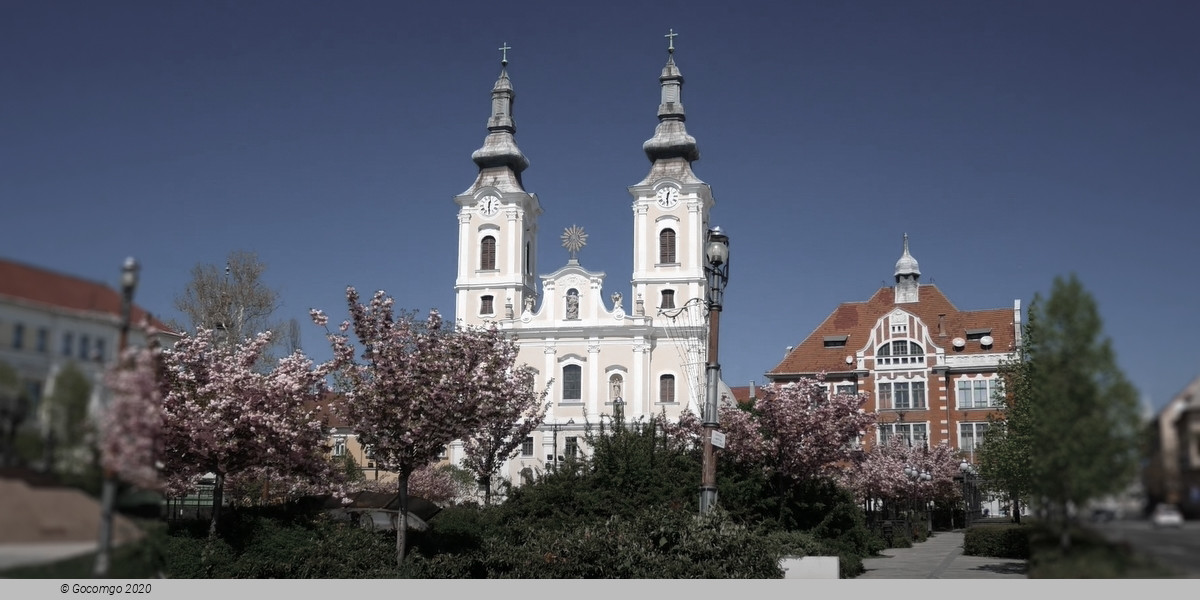Miskolc

Miskolc is a city in northeastern Hungary, known for its heavy industry. With a population of 161,265 (1 Jan 2014) Miskolc is the fourth largest city in Hungary (behind Budapest, Debrecen, and Szeged). It is also the county capital of Borsod-Abaúj-Zemplén and the regional centre of Northern Hungary.
Its first known dwellers were the Cotini, one of the Celt tribes. The area has been occupied by Hungarians since the "Conquest" in the late 9th century. It was first mentioned by this name around 1210 AD. The Miskóc clan lost their power when King Charles I centralized his power by curbing the power of the oligarchs.
Miskolc was elevated to the rank of oppidum (market town) in 1365 by King Louis I. He also had the castle of the nearby town Diósgyőr (now a district of Miskolc) transformed into a Gothic fortress. The city developed in a dynamic way, but during the Ottoman occupation of most of Hungary the development of Miskolc was brought to a standstill. The Turks burnt Miskolc in 1544 and the city had to pay heavy taxes until 1687. It was also ruled by Ottomans after Battle of Mezőkeresztes in 1596 as part of Eyalet of Egir until 1687. It was during these years that Miskolc became an important centre of wine-growing. By the end of the 17th century the population of the city was as large as that of Kassa/Košice, and 13 guilds had been founded.
During the war of independence against Habsburg rule in the early 18th century, Prince Francis II Rákóczi, the leader of the Hungarians put his headquarters in Miskolc. The imperial forces sacked and burnt the city in 1707. Four years later half of the population fell victim of a cholera epidemic. Miskolc recovered quickly, and another age of prosperity began again. In 1724, Miskolc was chosen to be the city where the county hall of Borsod county would be built. Many other significant buildings were built in the 18th and 19th centuries, including the city hall, schools such as Lévay József Református Gimnázium és Diákotthon, churches, the synagogue, and the theatre. The theatre is commonly regarded as the first stone-built theatre of Hungary, although the first one was actually built in Kolozsvár (then a part of Hungary, now Cluj-Napoca, Romania). According to the first nationally held census (1786) the city had a population of 14,719, and 2,414 houses.
These years brought prosperity, but the cholera epidemic of 1873 and the flood of 1878 took many lives. Several buildings were destroyed by the flood, but bigger and grander buildings were built in their places. World War I did not affect the city directly, but many people died, either from warfare or from the cholera epidemic. It was occupied by Czechoslovak troops between 1918 and 1919 after the First World War.
After the Treaty of Trianon, Hungary lost Kassa (today Košice, Slovakia) and Miskolc became the sole regional center of northern Hungary. This was one of the reasons for the enormous growth of the city during the 1930s and 1940s.
Early in World War II Hungary became an ally of Nazi Germany. Unhappy with the Hungarian government, German troops occupied Hungary on March 19, 1944 and put the anti-semitic Arrow Cross Party in charge of the government. Jews in Miskolc and elsewhere were ordered to wear yellow stars on their clothing. Under the supervision of Nazi SS-Obersturmbannführer Adolf Eichmann, "deportations" from Miskolc began on June 11 or 12th, 1944. Over 14,000 Jewish adults and children were sent by cattle car to Auschwitz, where most were gassed on arrival. After the war Jews who survived the holocaust returned to Miskolc hoping to reclaim their land and possessions. Over 130 were rounded up by members of the local Arrow Cross Party and summarily murdered. The Jewish cemetery on a hill overlooking Miskolc has a memorial for them. It includes the 10 commandments, carved in stone, all written in Hebrew except Thou shall not kill, which is written in Hungarian.
The preparation for World War II established Miskolc as the national centre of heavy industry, a position the city maintained until the 1990s. Although Miskolc suffered a lot during the last year of the war, it recovered quickly, and by absorbing the surrounding villages, it became the second-largest city of Hungary with more than 200,000 inhabitants.
On July 30 and August 1, 1946, the Miskolc pogrom led to death of one accused Jewish black marketeer, the wounding of another, and subsequently the death of a Jewish policeman. Economic hardship and anti-Semitism motivated the riots.
In 1949, the University of Miskolc was founded (as a successor of the Academy of Mining, formerly in Selmecbánya, which is now Banská Štiavnica, Slovakia).
During its long history Miskolc survived fires, floods, plagues and foreign invasions, but maintained its position as the centre of northeastern Hungary. The 1990s brought a crisis in the iron industry with a decline in the population.
Miskolc is now trying to become known as a cultural – instead of merely an industrial – city. Among the various cultural events, one of the most important festivities is the International Opera Festival, held in every summer.
Tourist destinations in Miskolc include Tapolca, Lillafüred and Felsőhámor. Tapolca has a park with a boating pond and the unique Cave Bath. Lillafüred and Felsőhámor are pretty villages in a valley surrounded by mountains and forests; their sights include the Hotel Palace on the shore of the Lake Hámori, the Szinva waterfall (the highest waterfall of the country), the Anna Cave and the István Cave.

